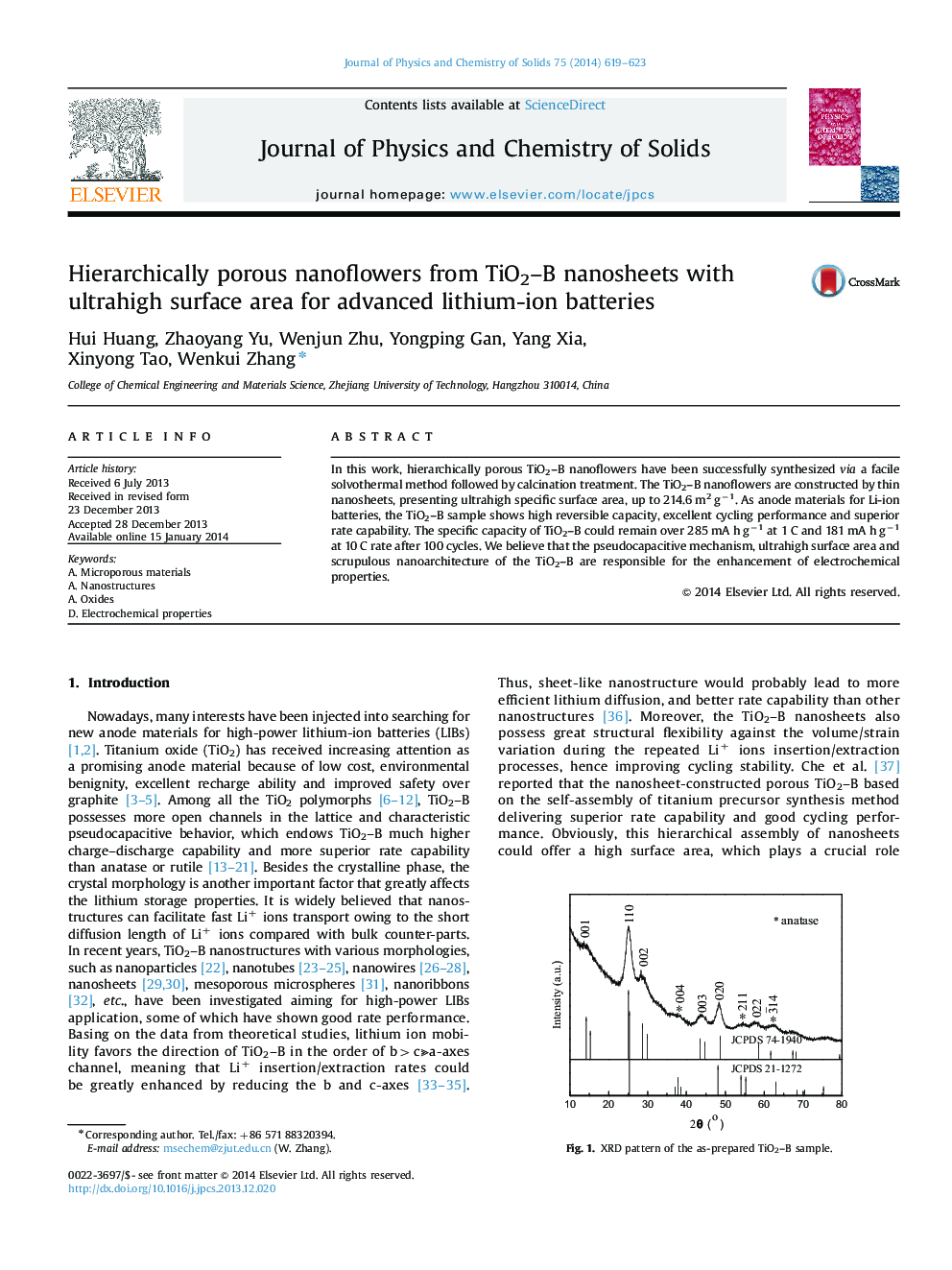| Article ID | Journal | Published Year | Pages | File Type |
|---|---|---|---|---|
| 1515800 | Journal of Physics and Chemistry of Solids | 2014 | 5 Pages |
•The hierarchically porous TiO2–B nanoflowers are constructed by many ultrathin nanosheets, presenting ultrahigh specific surface area as high as 214.6 m2 g−1.•The TiO2–B electrode delivers high reversible capacity of 285 mA h g−1 at 1 C, and decreases from 196 to 181 mAh g−1 at 10 C rate during 100 cycles.•The excellent electrochemical properties of TiO2–B are attributed to the ultrahigh surface area, pseudocapacitive mechanism and scrupulous nanoarchitecture.
In this work, hierarchically porous TiO2–B nanoflowers have been successfully synthesized via a facile solvothermal method followed by calcination treatment. The TiO2–B nanoflowers are constructed by thin nanosheets, presenting ultrahigh specific surface area, up to 214.6 m2 g−1. As anode materials for Li-ion batteries, the TiO2–B sample shows high reversible capacity, excellent cycling performance and superior rate capability. The specific capacity of TiO2–B could remain over 285 mA h g−1 at 1 C and 181 mA h g−1 at 10 C rate after 100 cycles. We believe that the pseudocapacitive mechanism, ultrahigh surface area and scrupulous nanoarchitecture of the TiO2–B are responsible for the enhancement of electrochemical properties.
